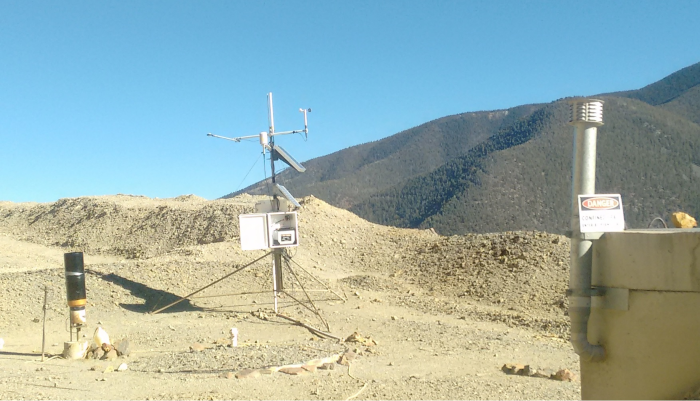





Chevron Mining, Inc., (CMI) owned and operated a 6.6 million-metric-ton-per-year (6.6 million-U.S.-ton) molybdenum mining and processing operation in northern New Mexico until June of 2014. The operation included ore transport, crushing, concentration, and drying. The facility also included 4.3 megawatts of gas or diesel electrical generation. Montrose Air Quality Services (MAQS) operated a network of meteorological and groundwater monitoring stations for CMI from 1995 through mine closure. The mine is currently in closure status and is under the control of Chevron Environmental Management Corporation (EMC).
MAQS continues to operate a large network of meteorological and groundwater-lysimeter monitoring stations at the project mine and tailings operations. The stations within the network are in a mountainous region of northern New Mexico, in complex terrain. The meteorological monitoring consists of five 3-meter (10-foot) tripod tower stations, one 10-meter (33-foot) tower, five precipitation stations, and ten lysimeter monitoring wells.
The network provides long-term data to support mine reclamation test plots and provides precipitation data for the mine stormwater-discharge permit. One data logger installation monitors output from a flow meter and provides monthly data summaries in compliance with the discharge permit issued by the state regulatory agency.
Chevron EMC recently authorized MAQS to expand the existing network of radio communications to improve data monitoring and simplify data acquisition. The existing network consisted of three monitoring stations communicating through RF450 radios to a base station. MAQS installed this network in 2008, and it included two CR1000 dataloggers and one CR200 datalogger.
MAQS added two additional stations to the radio network in October of 2016. The radio network now consists of three CR1000 dataloggers, one CR200 datalogger, one CR10X PakBus datalogger, four RF450 radios, and two RF451 radios. Two of the stations have radios configured as repeaters to enable communications in the complex terrain, with elevations ranging from 2,000 to 3,000 meters (7,000 to 10,000 feet). Each of the field stations is solar powered, with augmented photovoltaic and battery storage to accommodate radio communications.
Sumário de Estudos de Caso
Aplicação
Upgrading measurement system at mining siteLocalização
Questa, New Mexico, USAProdutos Utilizados
CR1000 CR200 CR10X CR850 RF450 RF451 SR50-L 229-LColaboradores
Robert Powell, MAQSOrganizações Participantes
Chevron MiningParâmetros de Medição
Wind speed, wind direction, relative humidity, ambient temperature, barometric pressure, solar radiation, net radiation, surface precipitation, subsurface water flow, snow level, matrix suction, pipe water flowVer o PDF